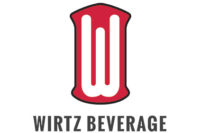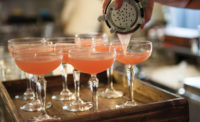How to integrate mobile into merchandising
Increased mobile connectivity offers opportunities at the shelf.


The biggest change to the retail environment in recent years isn’t something retailers have done; it’s the growth of shopper-driven mobile connectivity. Recent research indicates a large majority of consumers have used, or plan to use, quick response (QR) codes to get more information on products and access offers via their smartphones.
This is happening all across the path to purchase, and increasingly at the shelf itself. Beverage manufacturers as well as retailers can make the most of this trend by providing QR codes at the shelf for shoppers who are interested and willing to use them.
QR codes are two-dimensional (2D) barcodes that can be scanned by any web-enabled mobile device with a code reader installed. They provide an instant link to online content, such as a mobile website or a video. A report from ScanLife released in April showed overall barcode scanning traffic increased more than 800 percent from this time a year ago. Additionally, the report found retail and media industries generated some of the most scanned 2D barcode campaigns.
One area that would benefit from QR code use is the wine category. Most people experience at least some anxiety when choosing a wine, and that anxiety increases as the occasion changes. Wine for dinner is one thing, but if it is dinner with guests it is an even bigger decision. Wine as a gift is the most stressful of all.
Retailers can alleviate some of this by providing all the information shoppers would like to have at the point of decision, but space considerations prevent signage in front of every bottle. QR codes can link to any amount of information, from vintage information, comparisons with other wines, recipes, tasting notes and more. Simply placing packaging information and putting it into a mobile format can alleviate the stress of buying wine and create a loyal shopper.
Other beverage categories can benefit as well. Carbonated soft drinks can use QR codes at the shelf to communicate offers. These could be in the form of coupons, cross-promotional incentives or access to more information about the manufacturer’s sustainability efforts.
For retailers and brands looking for differentiation on the basis of something other than price, the ability to provide more information at the time of decision for the shopper has enormous value.
It is not a question that the age of mobile is here, and it’s not going away. Shoppers are using mobile in ways no one conceived of even five years ago, and the goal for marketers is to be where the shoppers are, all across the path to purchase. Incorporating mobile connectivity into merchandising plans is one of the most important things a manufacturer or retailer can do. The key is to integrate with other messages and foster collaboration between the retailer and consumer packaged goods.
Looking for a reprint of this article?
From high-res PDFs to custom plaques, order your copy today!






